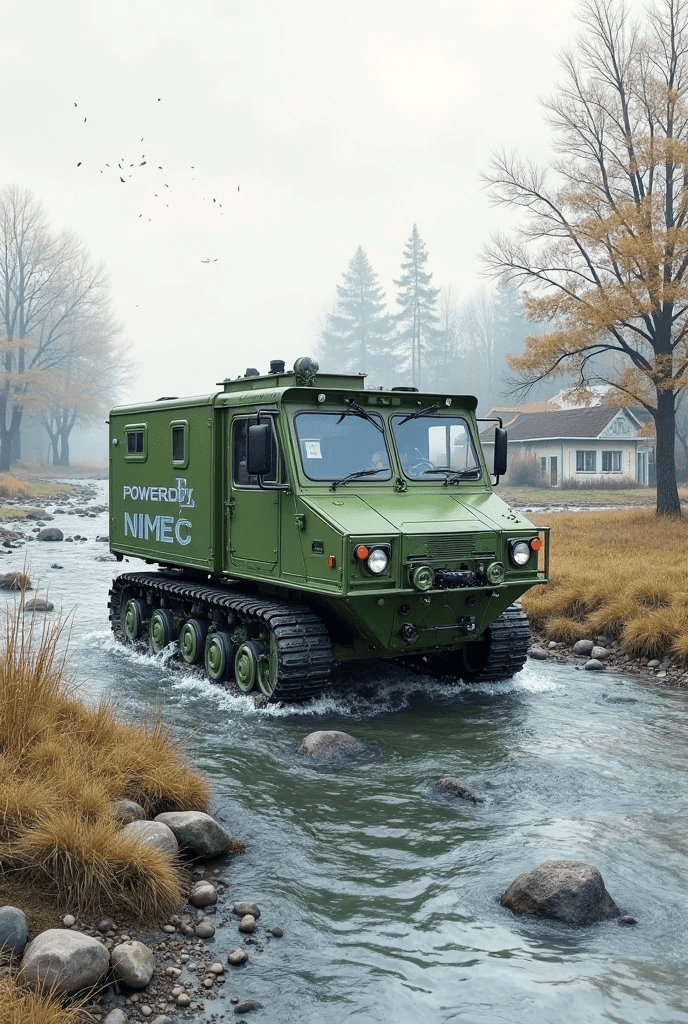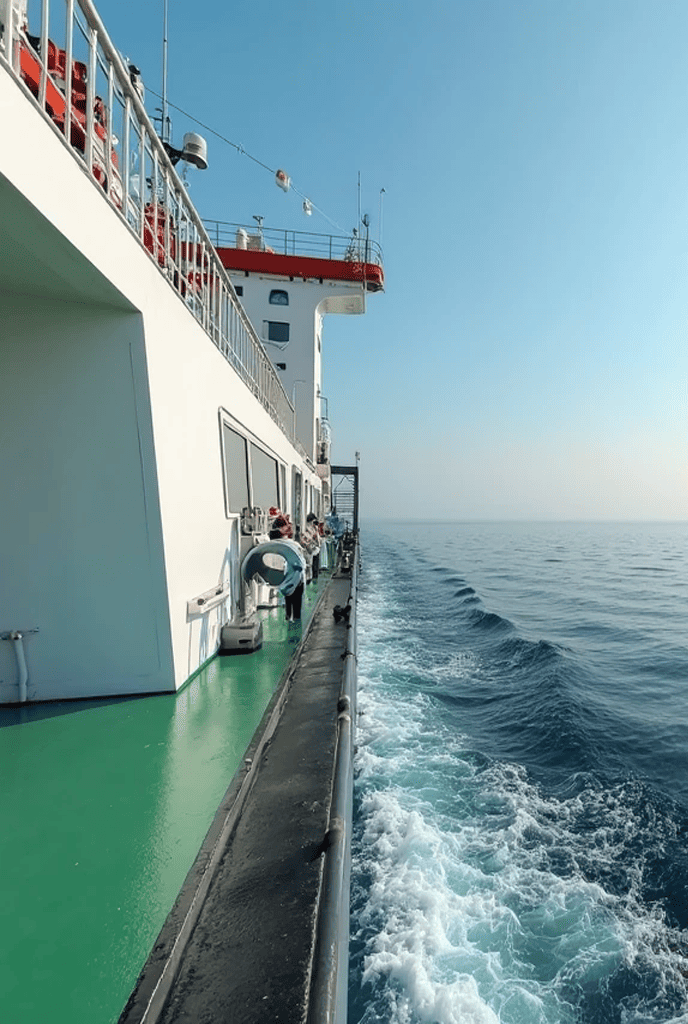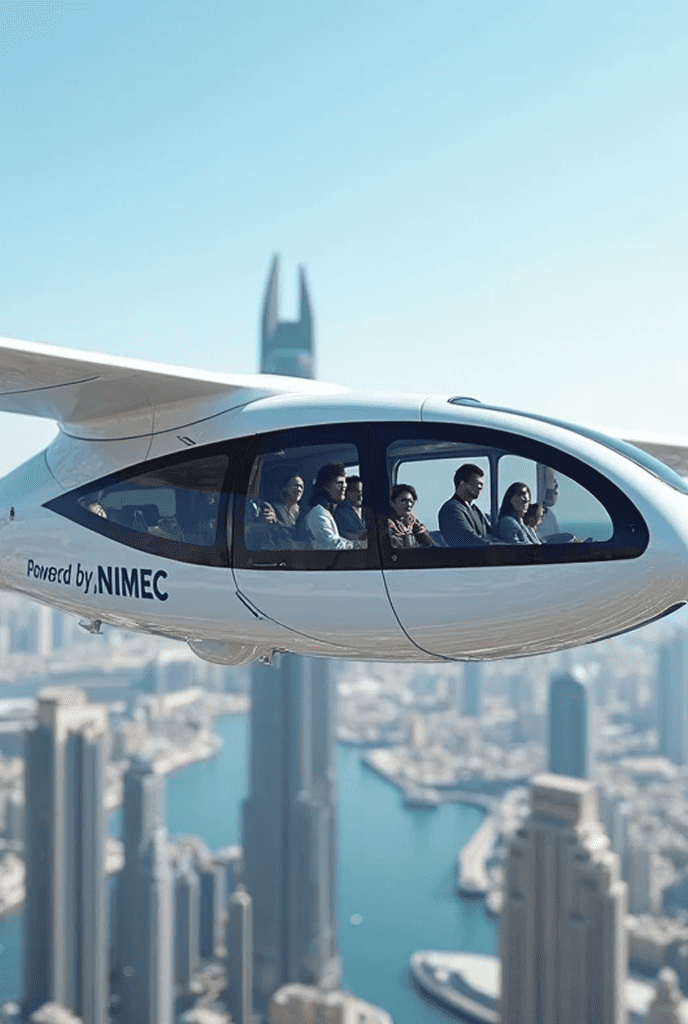Notice
Transition is currently unavailable. Maintenance in progress.


Efficient Propulsion for Land, Sea and Air Platforms.
Heavy-duty mining and road machinery — including dump trucks, road trucks and
specialised lorries — can already operate efficiently using electric drive
systems. Electric propulsion delivers high torque from the very first rotation,
precise control, reduced mechanical wear, and simplified maintenance. This
enhances reliability, lowers operational costs, and meets the environmental
standards of the modern era.
The main challenge lies in securing a reliable power source. Industrial
batteries are bulky, require long charging times, are sensitive to temperature
extremes, and quickly lose capacity under heavy load. In remote locations, with
complex logistics and continuous operations, relying on batteries becomes highly
impractical and costly.
NIMEC modules solve this problem. The integrated magnetic self-generation system
produces electricity directly on board — without recharging, without downtime,
and without loss of output. Compact and powerful, these systems perform reliably
in the harshest environments, ushering in a new era of energy autonomy for
heavy-duty machinery.
Using an integrated NIMEC generator instead of external power infrastructure
offers significant economic advantages. There are no expenses for charging
stations, energy delivery logistics, battery maintenance, or equipment downtime
— all of which contribute to higher project profitability. Machinery equipped
with onboard generation becomes energy-independent and operates precisely when
needed, without delays or additional costs.
Moreover, NIMEC magnetic modules enable life extension of existing vehicle
fleets. Equipment with worn or failed internal combustion engines and
transmissions can be retrofitted with electric drive and onboard generation.
This approach is not only far more cost-effective than full restoration or
replacement, but also ensures compliance with modern operational standards —
offering high efficiency, low noise, and zero emissions.


Tracked machinery has long relied on hydraulic drive systems. Hydraulic motors
power tracks, turrets, rotating platforms and attachments, while hydraulic
cylinders perform lifting, shifting and locking functions for heavy structures.
Yet despite the effectiveness of hydraulic actuation itself, its most
vulnerable component remains the power module responsible for pressurising and
circulating hydraulic fluid — typically driven by an internal combustion engine.
These engines require constant fuel supply, are prone to mechanical failure,
demand complex servicing, and increase the machine’s acoustic, thermal and
visual detectability.
The NIMEC power unit eliminates these limitations. Instead of an internal
combustion engine, it uses a motor powered by magnetic energy cells, removing
the need for fuel, exhaust systems, cooling units or traditional transmissions.
This configuration operates quietly, without emissions or overheating, making
the vehicle nearly invisible to acoustic, thermal and chemical sensors —
a critical advantage in combat environments where stealth and concealment often
determine survival.
Military tracked platforms equipped with NIMEC technology retain full
operational capability even when parts of the drivetrain are damaged, as the
multi-point hydraulic drive enables continued track movement and allows power
redistribution in the event of wheel failure. With no fuel on board, the risk
of fire or explosion is eliminated. Supercapacitor modules can be swapped out
quickly in the field, ensuring uninterrupted performance even under extreme
load.
NIMEC delivers more than just an alternative to internal combustion — it enables
a fundamentally new level of autonomy, reliability and combat survivability.
In the maritime industry, the use of electric and hydraulic drives has long
become standard practice — powering propellers, steering systems, lifting
equipment, and mooring mechanisms. However, the primary source of energy remains
diesel internal combustion engines, with all their inherent limitations:
constant fuel demand, complex maintenance, noise, exhaust emissions, and a
significant thermal signature.
NIMEC power modules offer an alternative that requires no major structural
modification to the vessel. Modern ships and small craft can be converted to
fully electric or hybrid configurations, where magnetic systems become the
primary source of propulsion. There is no need to remove the existing engine
— compact magnetic generation units can be installed in available space,
thereby increasing both reliability and buoyancy.
This transition not only reduces operational costs but also delivers critical
advantages: silent operation, zero emissions, minimal heat output, and a
drastically lower risk of fire. In port operations, coastal missions, protected
waters, or submerged conditions, such benefits are not just convenient — they
represent a strategic advantage.
For underwater vehicles, the NIMEC solution unlocks a fundamentally new level
of endurance. Magnetic power modules ensure silent, emission-free operation and
do not require oxygen for combustion, allowing submersibles to remain submerged
for extended periods without surfacing. The absence of exhaust systems and
heat-intensive engines greatly reduces detectability by acoustic and thermal
sensors — a decisive advantage for scientific, industrial, or tactical
applications beneath the surface.
In surface operations, the environmental demands of modern ports are becoming
increasingly strict. Entry into designated EcoPorts and Emission Control Areas
(ECAs), as regulated by international conventions such as MARPOL Annex VI and
the EU Green Port Directive, is now subject to stringent emissions standards.
Vessels powered by internal combustion engines may face high fees or even denial
of entry. NIMEC’s clean, magnetically-driven systems allow vessels to comply
with these regulations effortlessly, enabling unrestricted access while avoiding
costly penalties and ensuring full environmental compliance.


The transition to magnetic propulsion in manned aviation opens fundamentally
new possibilities. NIMEC power modules enable a complete elimination of fuel
and all associated systems—tanks, pumps, pipelines, ventilation, and safety
mechanisms. This significantly reduces the weight of the aircraft, simplifies
its construction, and frees up internal volume for additional equipment,
payload, or backup engines.
One of the most critical challenges in conventional aviation remains landing:
most aircraft are designed to descend with a minimum amount of fuel on board,
which limits route flexibility and increases risks in emergency situations.
With magnetic power generation, this factor disappears—the weight remains
constant throughout the entire flight, and the landing mode can be calculated
independently of the remaining energy reserve.
Eliminating bulky fuel systems also creates the opportunity to integrate
vertical take-off and landing (VTOL) engines. This greatly improves safety,
reduces stress on runways, and enables operation in remote or undeveloped
locations. Electric motors can be installed alongside traditional turbines or
used as the primary propulsion system through retrofitting existing turbine
units.
Without the need for refueling and with the ability to continuously generate
energy onboard, flight duration becomes virtually unlimited. This is especially
critical for rescue, transport, and special missions where time and reliability
are paramount. NIMEC magnetic modules transform the entire approach to aircraft
design, operation, and safety.
Beyond technological and operational advantages, the shift to magnetic
propulsion delivers a strong economic benefit. Fuel and its logistics account
for up to 40% of operational costs in both passenger and cargo aviation.
Eliminating this expense, along with reduced maintenance, no need for fuel
system inspections, fire safety systems, or turbine repairs, drastically
improves flight economics. NIMEC modules require minimal servicing and offer
stable performance under a wide range of loads and temperatures. Moreover,
their operational lifespan significantly exceeds that of conventional internal
combustion engines. Altogether, this makes aircraft operation economically
resilient and predictable—even in the face of fluctuating energy markets.